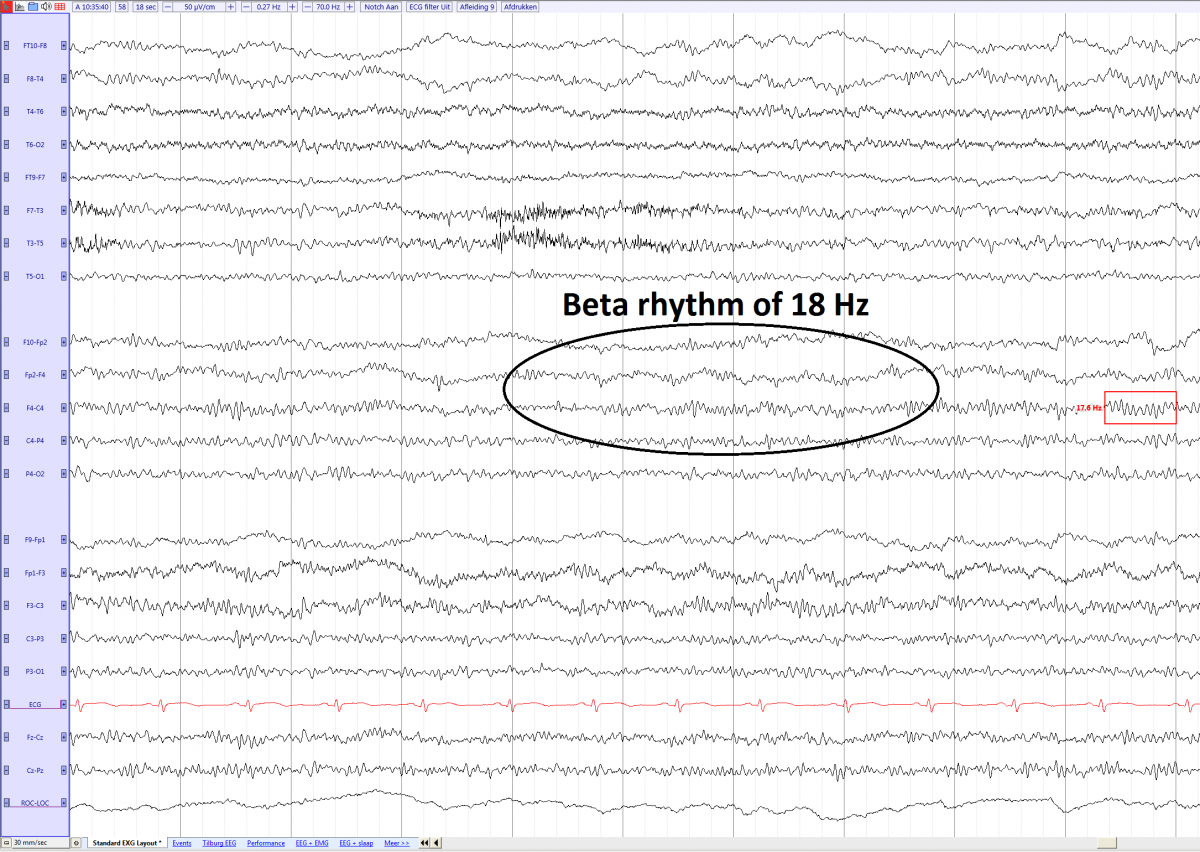Difference between revisions of "Beta rhythm"
From EEGpedia
| Line 5: | Line 5: | ||
*Increased focal beta activity could be caused by cortical dysplasia, however sometimes also due to abces, tumor, AVM etc | *Increased focal beta activity could be caused by cortical dysplasia, however sometimes also due to abces, tumor, AVM etc | ||
*Skull defects can cause focal, high amplitude, sharp beta activity ([[Breach rhythm]]) | *Skull defects can cause focal, high amplitude, sharp beta activity ([[Breach rhythm]]) | ||
| + | |||
| + | |||
| + | ---- | ||
| + | |||
| + | |||
| + | '''''Beta rhythm in a young adult using a lot of benzodiazepines (double banana)''''' | ||
| + | [[File: Beta_e_double_banana.png |border|1200px|left]]Beta_e_double_banana.png | ||
| + | ---- | ||
Latest revision as of 10:29, 22 February 2017
- Frequency: >13 Hz
- Normal in frontal en central area
- Increase of beta due to medication: benzodiazepines, barbiturates and other sedative medications
- Decreased focal beta activity is seen in cortical dysfunction, for instance infarction, abces, tumor, AVM etc.
- Increased focal beta activity could be caused by cortical dysplasia, however sometimes also due to abces, tumor, AVM etc
- Skull defects can cause focal, high amplitude, sharp beta activity (Breach rhythm)
Beta rhythm in a young adult using a lot of benzodiazepines (double banana)
